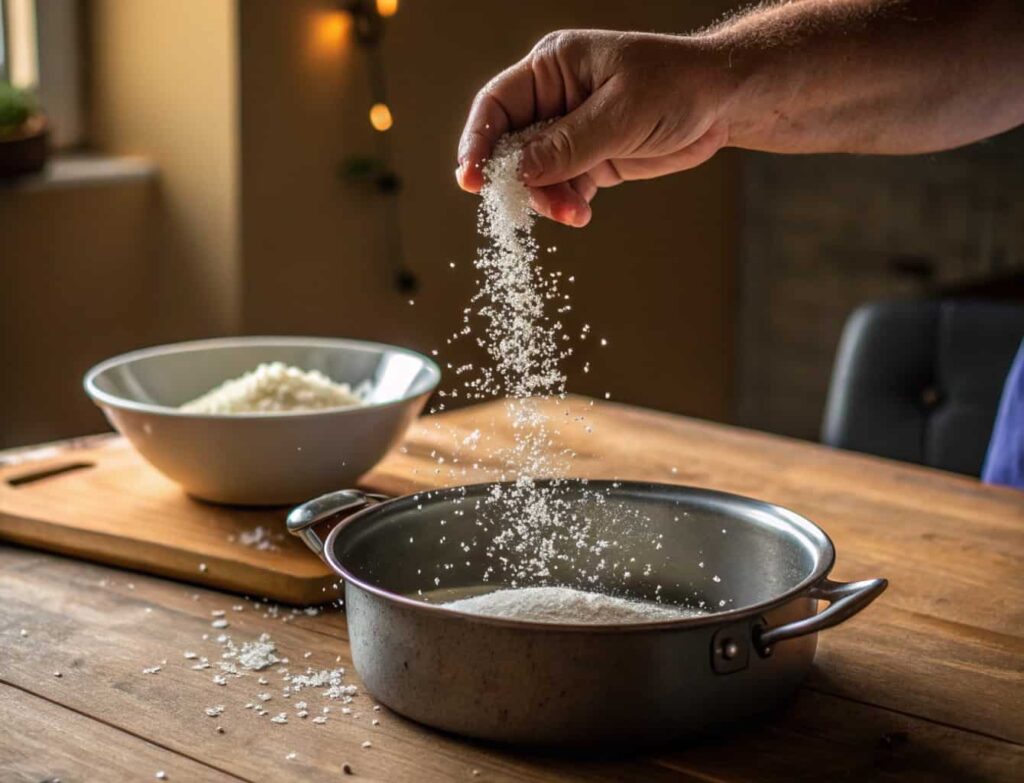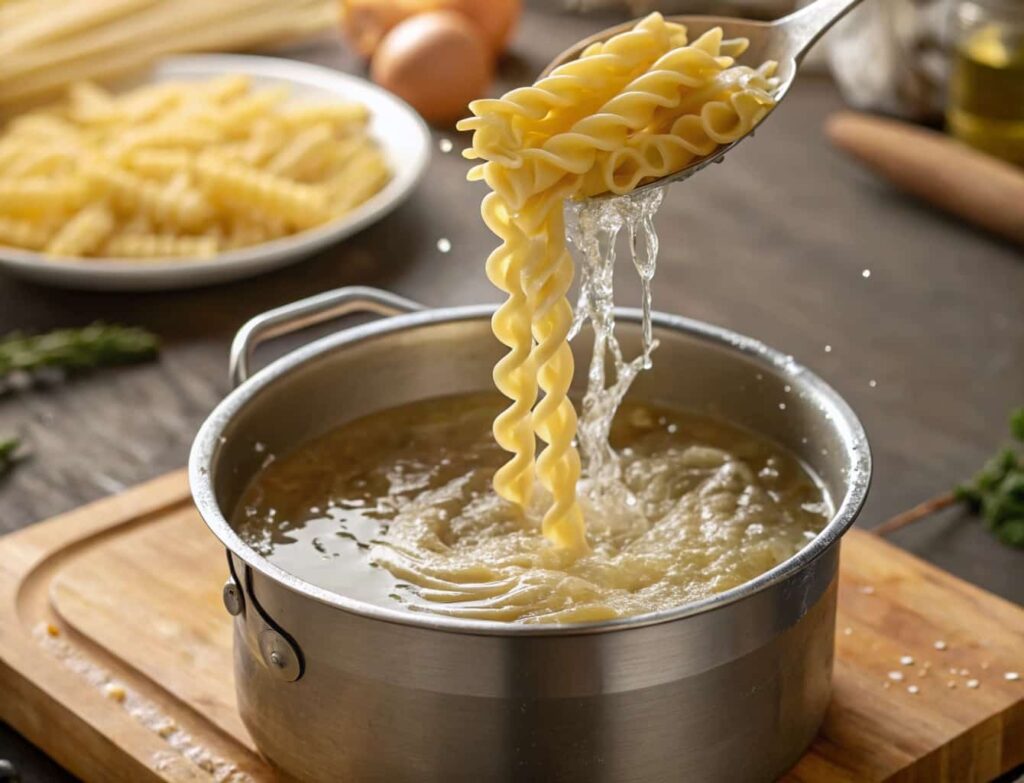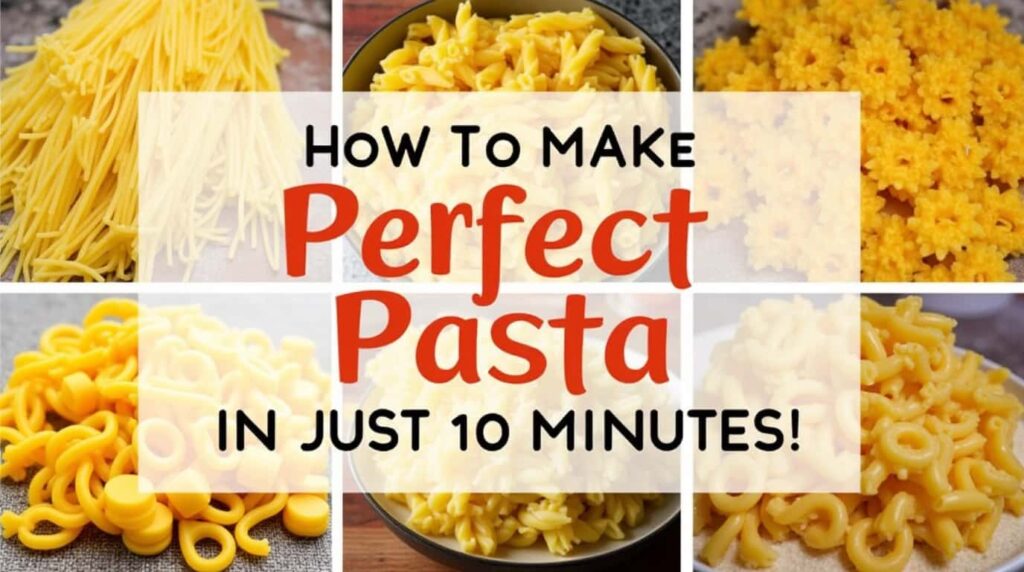Ever find yourself staring at a pot of water, waiting for it to boil, questioning every life decision that led you to this moment? We’ve all been there. But what if I told you that making perfect pasta doesn’t have to be a drawn-out, patience-testing experience?
In just 10 minutes, you can whip up a bowl of pasta so good it’ll make an Italian grandma nod in approval (well, maybe). The key is technique, a few smart tricks, and knowing what not to do—which, spoiler alert, includes breaking spaghetti in half (seriously, don’t do that).
So, grab your favorite pasta and let’s make magic happen in your kitchen.
Step 1: The Right Pot & Water Ratio (Yes, It Matters)

You might think, “Water is water, right?” Not quite. The amount of water you use makes a huge difference. Too little, and your pasta will clump together in a sad, sticky mess. Too much, and you’re just wasting energy.
The rule of thumb? About 4–6 quarts (liters) of water per pound of pasta. And yes, use a big enough pot so your pasta can dance freely without sticking.
Step 2: Salt Like You Mean It

This is non-negotiable. You have to salt your water—heavily. Think of it as seasoning your pasta from the inside out. If your water tastes like a bland soup, your pasta will too.
How much salt? About 1–2 tablespoons per gallon of water. No, this won’t make your pasta taste salty—it’ll make it taste amazing.
Step 3: The Right Time to Drop the Pasta

Don’t be that person who dumps pasta into water that isn’t fully boiling. The water should be rolling like a stormy ocean before you add your noodles. If it’s just simmering, you’ll end up with sad, mushy pasta.
Once it’s boiling, toss in the pasta and stir immediately—otherwise, it’ll stick together like long-lost best friends who refuse to separate.
Step 4: To Stir or Not to Stir? (Hint: Always Stir)
This isn’t a “set it and forget it” situation. You need to stir your pasta every couple of minutes to keep it from clumping together. A quick swirl ensures even cooking and a smooth, tangle-free experience when you plate it up.
Step 5: The Perfect Cooking Time (Al Dente or Bust)
If you’re relying on the time printed on the box, stop right there. Those numbers are just vague guidelines, like speed limits—sometimes they make sense, sometimes they don’t.
Instead, set your timer two minutes earlier than the suggested time and start tasting. The goal is al dente—firm but not raw, soft but not mushy. Overcooked pasta is a tragedy.
Step 6: The Biggest Mistake—Rinsing Pasta (Don’t Do It!)
Rinsing pasta under water is a crime against food. Why? Because that starchy coating on your noodles is liquid gold. It helps sauces cling like they were made for each other.
The only time you should rinse pasta is if you’re making a cold pasta salad. Otherwise, keep it hot and let that starch do its magic.
Step 7: Save That Pasta Water!
Speaking of magic, the starchy pasta water is your secret weapon. Before you drain the pasta, scoop out a cup of that liquid gold.
Adding a splash of pasta water to your sauce makes it silkier and helps it stick to the noodles like a perfect love story.
Step 8: The Right Way to Mix Pasta & Sauce
You never want to just plop dry pasta onto a plate and pour sauce on top like some kind of lazy monster. No, no, no.
Instead, toss the drained pasta directly into the sauce while it’s still in the pan. Let them get to know each other, absorb flavors, and create the perfect marriage of pasta and sauce.
Step 9: The Final Touches (Cheese & Olive Oil FTW)
Before you serve, finish strong. A drizzle of high-quality olive oil, a generous sprinkle of Parmesan or Pecorino Romano, and maybe some fresh herbs. This takes your pasta from good to next-level delicious.
Oh, and if you have any guests, act casual, like you didn’t just create a masterpiece in 10 minutes.
If you’re eager to delve deeper into the fascinating world of pizza, don’t miss our comprehensive article: You’ll Never Look at Pizza the Same Way Again! This piece uncovers intriguing facts, unusual toppings, and the rich history behind everyone’s favorite dish.
Final thoughts
There you have it! In just 10 minutes, you’ve mastered the art of perfect pasta. No more soggy noodles, no more bland bites—just pure pasta perfection.
Now, go forth and cook like a pro. And remember, if someone asks why your pasta tastes so good, just give them a mysterious smile and say, “It’s all in the technique.”



